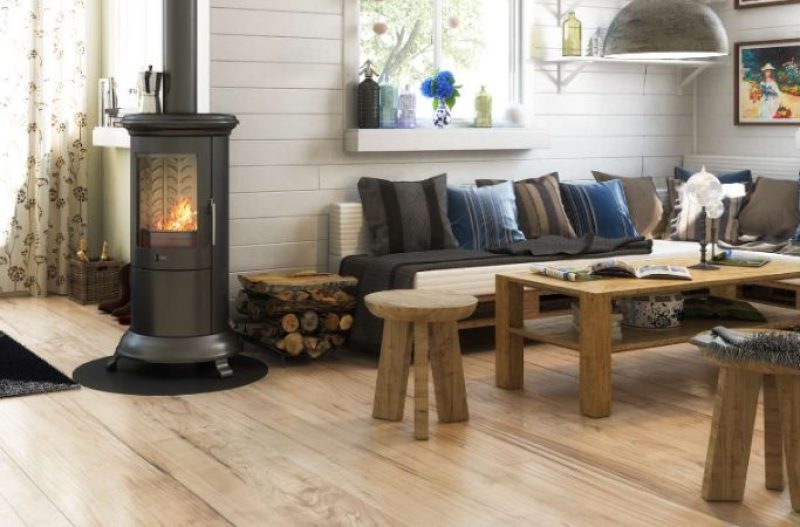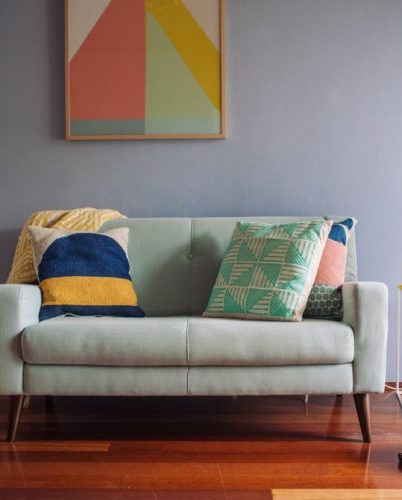Looking to keep your laminate floors looking pristine and extend their lifespan? Cleaning laminate floors is essential for maintaining their beauty and durability.
We explore the best ways to clean laminate floors, common mistakes to avoid, and dos and don’ts to keep in mind.
From using gentle cleaning solutions to avoiding harsh chemicals, learn how to maintain and care for your laminate floors effectively. Let’s dive in!
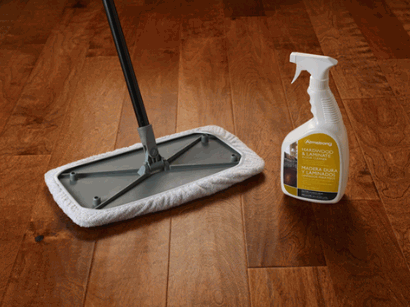
What Are Laminate Floors?
Laminate floors are synthetic flooring products designed to mimic the look of wood or stone. They consist of three main layers: the core layer, the decor layer, and the wear layer. These floors are durable, easy to clean, and come in a variety of styles and patterns.
One of the key benefits of laminate flooring is its versatility in terms of design. Whether you prefer the classic elegance of hardwood or the modern vibe of tile, laminate floors offer an array of options to suit any interior aesthetic. Their innovative surface layer provides a realistic texture that can closely resemble natural materials.
The installation process of laminate floors is relatively straightforward, making it a popular choice for DIY enthusiasts. Some designs come with interlocking mechanisms, allowing for a hassle-free floating floor installation without the need for adhesives or nails.
Popular designs in laminate flooring include oak, maple, and cherry wood patterns, as well as slate and marble imitations. These designs cater to various preferences and can effortlessly elevate the ambiance of any room.
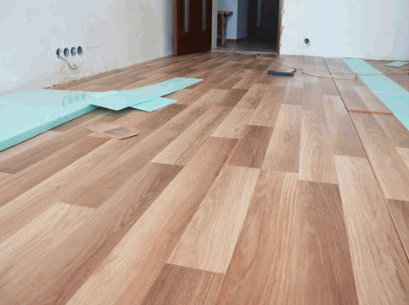
Why Is Cleaning Laminate Floors Important?
Cleaning laminate floors is essential to maintain their appearance and longevity. Regular cleaning not only keeps the floors looking clean but also helps them shine and prevents dirt and grime buildup.
Properly caring for your laminate floors not only enhances the aesthetics of your living space but also contributes to the overall hygiene of your home. Dust, pet dander, spills, and foot traffic can gradually dull the surface of laminate floors, making them appear lackluster. By incorporating a consistent cleaning routine, you can ensure that your floors retain their shine and luster for years to come.
Using specialized cleaning products designed for laminate floors is crucial in maintaining their beauty. Avoid harsh chemicals or abrasive tools that could damage the protective layer of the laminate. Instead, opt for gentle cleaners that are specifically formulated to care for laminate surfaces. Incorporating a dry microfiber mop into your regular cleaning routine can help remove surface dust and debris without causing scratches.
Explore further: Home Remedies For Slippery Floors
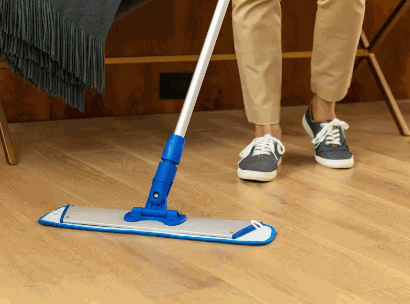
What Are The Best Ways To Clean Laminate Floors?
To ensure your laminate floors remain in top condition, it’s crucial to follow the best cleaning practices. Using the right methods and products can keep your floors looking pristine and free from damage.
First and foremost, regular sweeping is essential to prevent dirt and debris from scratching the surface of your laminate floors. Use a soft-bristle broom or a vacuum with a hard floor setting to remove any loose particles.
For a deeper clean, mopping with a damp mop is effective, but be cautious not to use excessive water. Too much water can seep into the seams and cause swelling or warping of the flooring.
Choosing gentle cleaning solutions specifically formulated for laminate floors is vital to avoid leaving streaks or a dull residue. Always follow the manufacturer’s guidelines when selecting a cleaning product.
Sweep Or Vacuum Regularly
Regular sweeping or vacuuming of laminate floors is crucial to remove dirt and debris that can scratch the surface. Make sure to focus on high-traffic areas and under furniture to keep your floors free from dust and particles.
By incorporating daily floor maintenance into your routine, you not only uphold the aesthetics of your home but also prolong the lifespan of your laminate flooring. Targeting high-traffic zones where dirt tends to accumulate is essential for maintaining a pristine appearance. Reaching under furniture allows for a thorough cleaning, preventing buildup in those hard-to-reach spots.
Utilizing the right tools, such as microfiber cloths, can greatly enhance the cleaning process, capturing dust and small particles efficiently without scratching the surface. Regular cleaning not only keeps your floors looking fresh but also prevents deep-seated grime that can be harder to remove over time.
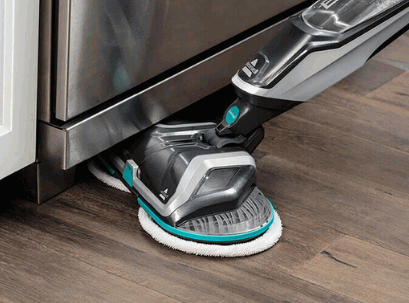
Use A Microfiber Mop
When mopping laminate floors, opt for a microfiber mop to ensure gentle yet effective cleaning. Microfiber material traps dirt and dust without leaving streaks or residue, making it ideal for maintaining the shine of your floors.
Moreover, microfiber mops are environmentally friendly and cost-effective since they can be reused countless times, reducing the need for disposable cleaning products. The unique structure of microfiber allows it to pick up more dirt and debris than traditional mops, providing a deep clean with less effort.
When using a microfiber mop, remember to start from the far end of the room and work your way toward the entrance to avoid stepping on the freshly cleaned areas. Use a sweeping motion to glide the mop over the surface, ensuring all dirt is picked up effectively.
By choosing a microfiber mop, you are not only cleaning your laminate floors efficiently but also prolonging their lifespan by preventing scratches and damage that harsher cleaning methods might cause.
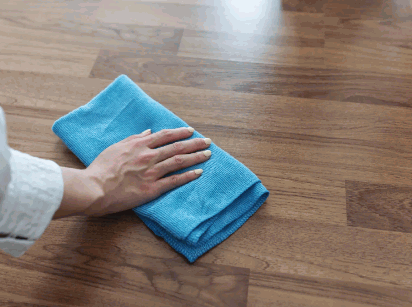
Avoid Excessive Water
Excessive water can damage laminate floors by seeping into the seams and causing warping or swelling. When cleaning, use a damp mop with a laminate cleaner specifically formulated for these floors to prevent water-related issues.
One of the major risks of exposing laminate floors to too much water is the potential damage it can lead to. The water can penetrate the protective layer of the laminate and reach the core, leading to warping or swelling of the planks. This can not only affect the appearance of your floor but also weaken its structure over time.
To maintain the integrity of your laminate flooring, it’s essential to minimize water usage during cleaning. Instead of soaking the floor, opt for a lightly damp mop and wring out excess water before mopping. This controlled approach reduces the risk of water seeping into the seams and causing damage.
Use A Gentle Cleaning Solution
Opt for a gentle cleaning solution when cleaning laminate floors to avoid damaging the surface. Look for a laminate cleaner that is specifically designed for these floors and follow the manufacturer’s instructions for safe and effective cleaning.
Using the right cleaning products not only ensures a sparkling clean floor but also helps maintain the longevity of your laminate flooring. Harsh chemicals can strip away the protective sealant, leading to dullness or even damage. By selecting a cleaner suitable for laminate floors, you safeguard the finish while effectively removing dirt and stains.
To simplify your search, consider products like Bona Hardwood Floor Cleaner or Black Diamond Wood & Laminate Cleaner, which have been praised for their gentle yet powerful formulas. Follow a simple cleaning routine, spraying the solution lightly on the floor or damping a mop, and wipe away grime effortlessly.
Spot Clean Stains Immediately
Promptly addressing stains on laminate floors is essential to prevent them from setting and becoming harder to remove. Use a soft cloth or sponge with a mild cleaning solution to spot-clean affected areas without scrubbing vigorously.
Immediate attention to spills and stains on laminate floors is crucial to maintaining their aesthetic appeal and prolonging their lifespan. Ignoring or delaying the cleaning process can lead to the pigment seeping into the flooring material, making it challenging to eliminate.
To ensure effective stain removal, always start by blotting the affected area gently with a soft cloth to soak up excess liquid. Do not rub vigorously as this can push the stain deeper into the floor’s surface, making it tougher to eliminate.
Next, create a gentle cleaning solution by mixing warm water with a mild soap or
- a designated laminate floor cleaner in a bucket or spray bottle.
- Remember, using harsh chemicals or abrasive cleaners can damage the laminate surface, so opt for gentle alternatives. Dip the cloth or sponge into the cleaning mixture and wring it out to ensure it is slightly damp, not soaking wet. Proceed to gently dab the stained area, working from the outer edges towards the center to prevent spreading.
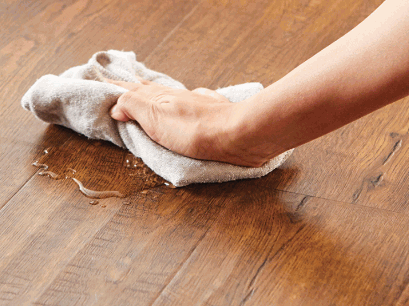
What Are The Common Mistakes When Cleaning Laminate Floors?
While cleaning laminate floors, it’s crucial to avoid common mistakes that can lead to damage or dullness. Understanding these pitfalls can help you preserve the beauty and integrity of your laminate flooring.
One common error to be wary of is using harsh chemicals on laminate floors. These can strip away the protective layer, leaving the surface vulnerable to scratches and dullness over time. Likewise, excessive water can seep into the seams of the laminate, causing it to warp or swell.
To rectify these mistakes, opt for gentle cleaning solutions specifically formulated for laminate flooring. Use a damp mop or cloth rather than drenching the floors with water. This will prevent potential damage and ensure your laminate floors maintain their shine and durability for years to come.
Using Harsh Chemicals
One of the common mistakes in cleaning laminate floors is using harsh chemicals that can strip away the protective layer and damage the surface. Opt for mild or laminate-specific cleaners to ensure proper care and maintenance.
Harsh chemicals contain strong agents that can break down the protective sealant on laminate floors over time. This leads to the loss of shine and luster, making the floors look dull and worn out. These chemicals may cause discoloration or fading, affecting the overall appearance of the flooring.
When seeking alternative cleaning solutions, consider gentle cleansers that are formulated for use on laminate surfaces. Look for products labeled as laminated-friendly, as they are specifically designed to clean without causing harm.
Using Too Much Water
Overusing water when cleaning laminate floors is a common mistake that can lead to swelling, warping, or buckling. It’s essential to follow proper cleaning techniques and use minimal water to protect the integrity of the laminate.
Excessive water exposure can cause irreversible damage to laminate floors by compromising the adhesive bonds and expanding the material beyond its capacity. This can result in unsightly bubbles, separation of layers, or even permanent structural deformities.
To prevent such issues, it is crucial to adopt a mindful approach towards water usage during cleaning routines. Instead of drenching the floor, opt for slightly damp mops or microfiber cloths to gently clean the surface without saturating it.
Promptly wiping up spills and avoiding leaving standing water on the floor can significantly reduce the risks of water-related damage.
Not Sweeping Or Vacuuming Regularly
Neglecting regular sweeping or vacuuming of laminate floors can result in the accumulation of dirt and grit that may scratch or dull the surface over time. Establishing a consistent cleaning routine is vital for preserving the appearance and condition of the floors.
By incorporating sweeping or vacuuming into your weekly cleaning regimen, you can prevent debris buildup that could damage the surface. Focusing on high-traffic areas such as entryways and hallways is particularly important to maintain the laminate’s durability. Using the appropriate cleaning products designed for laminate floors can help keep them looking their best.
What Are The Dos And Don’ts Of Cleaning Laminate Floors?
Understanding the dos and don’ts of cleaning laminate floors is crucial for maintaining their beauty and durability. By following these guidelines, you can ensure that your floors remain in top condition for years to come.
When cleaning laminate floors, using a dry mop or vacuum with a soft brush attachment is recommended to remove dust and debris without scratching the surface. Avoid using abrasive cleaners, steel wool, or harsh chemicals when cleaning laminate as they can damage the protective layer and dull the finish. Regularly sweeping or vacuuming and wiping up spills promptly can help prevent staining and warping. It’s important to use a damp mop with a mild cleaner specifically designed for laminate to maintain its shine and finish.
Do: Protect Floors From Furniture
To safeguard your laminate floors, it’s essential to use furniture pads or felt protectors under heavy items to prevent scratches or indents. Protecting high-traffic areas and wooden floors can help maintain the quality and appearance of the laminate.
These protective measures not only extend the lifespan of your laminate flooring but also reduce the need for costly repairs or replacements in the future. Placing furniture pads or felt protectors under chairs, tables, and other furnishings provides a cushioning barrier that absorbs impact and prevents unsightly marks. When focusing on high-traffic zones, consider adding runners or area rugs to further shield the floor from wear and tear.
Do: Use Door Mats
Placing door mats at entryways and exits can help trap dirt, moisture, and debris, preventing them from being tracked onto laminate floors.
By effectively capturing dirt and moisture, door mats serve as the first line of defense, protecting your laminate floors from scratches, stains, and other damages. Not only do they enhance the aesthetic appeal of your home’s entry points, but they also reduce the risk of slips and falls by providing a secure footing. Selecting the right type of doormat for specific areas, such as outdoor or indoor, can further optimize their functionality. For instance, consider investing in durable, waterproof mats for exterior doors to withstand harsh weather conditions.
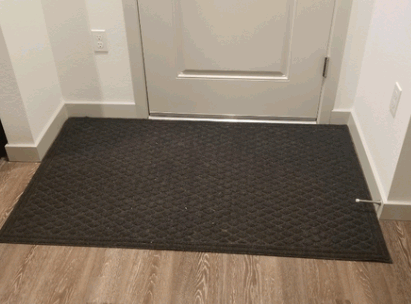
Don’t: Use Steam Cleaners
Avoid using steam cleaners on laminate floors as the excessive heat and moisture can cause delamination or irreparable damage. Steam cleaners are not recommended for cleaning laminate surfaces and can compromise the floor’s structural integrity.
Using steam cleaners on laminate floors can lead to warping of the floorboards, bubbles forming in the laminate, or the protective layer of the laminate becoming damaged, resulting in a dull and worn-out appearance.
The high temperatures produced by steam cleaners can weaken the adhesive holding the laminate together, leading to the potential separation of the planks over time.
Instead of steam cleaning, opt for gentle cleaning solutions specifically formulated for laminate floors that do not involve excessive moisture and heat.
Don’t: Use Abrasive Cleaners
Refrain from using abrasive cleaners or harsh scrubbing tools on laminate floors as they can scratch or dull the surface. Opt for gentle cleaning solutions and soft cloths to maintain the beauty and finish of your laminate flooring.
When caring for your laminate floors, it is essential to remember that gentle cleaning methods are key to preserving their integrity. Abrasive cleaners contain harsh chemicals or rough particles that can damage the protective layer of your laminate, leading to unsightly scratches and a loss of shine. Instead, consider using a mild detergent solution mixed with warm water to clean your floors effectively without causing any harm. Investing in a microfiber mop or soft cloth ensures that you can remove dirt and grime gently without risking any abrasions.
How To Maintain And Extend The Lifespan Of Laminate Floors?
Proper maintenance is key to extending the lifespan of laminate floors and preserving their appearance. By following specific care practices and preventive measures, you can ensure that your floors remain in optimal condition for years to come.
One essential aspect of laminate floor care is the placement of furniture pads under furniture legs to prevent scratching and scuffing. It’s crucial to avoid walking on laminate floors with high heels, as they can cause indentation and damage over time. Another important tip is to regularly trim pets’ nails to prevent them from scratching the surface. Placing rugs in high-traffic areas not only improves the resilience of the flooring but also adds a decorative touch to your living spaces.
Use Furniture Pads
Utilize furniture pads or felt protectors under heavy items to prevent scratches and dents on laminate floors. Protecting high-traffic areas and wooden floors from furniture damage can significantly extend the lifespan and maintain the quality of the flooring.
In terms of safeguarding your laminate floors, choosing the right furniture pads is key. Opt for pads with a soft felt or rubber surface to avoid any potential damage. Placing these pads strategically under heavy furniture pieces like tables, chairs, and cabinets can create a protective barrier that prevents unsightly marks and indentations. Focusing on high-traffic zones such as entryways, living rooms, and dining areas enhances the overall durability of your flooring.
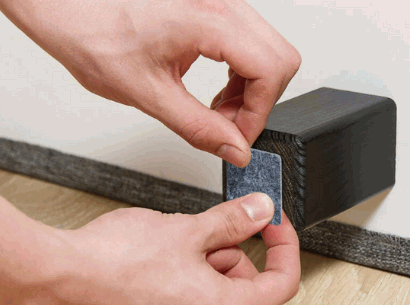
Avoid High Heels And Sharp Objects
Prevent damage to laminate floors by avoiding high heels and sharp objects that can cause scratches or indentations. Being mindful of footwear and objects in high-traffic areas and wooden floor sections can help preserve the integrity and surface quality of the laminate.
One important aspect to consider is the material of the high heels, as metal or pointed stiletto heels are more likely to leave marks on laminate floors compared to rubber or wider heels. Opting for footwear with flat, cushioned soles can also reduce the pressure on the floor, minimizing the risk of damage. It is also vital to lift furniture or any heavy objects when moving them across the floor, rather than dragging them to prevent scratches. Placing felt pads or coasters under furniture legs can offer an extra layer of protection against scratches and dents.
Keep Pets’ Nails Trimmed
Regularly trimming pets’ nails can prevent scratches and gouges on laminate floors, especially in high-traffic or wooden floor areas. Maintaining your pet’s nail length contributes to preserving the floor’s surface and minimizing the need for extensive cleaning and repairs.
By keeping your pet’s nails properly groomed, you not only safeguard your laminate flooring but also ensure a harmonious living environment for both you and your furry companion. Proper pet nail care can significantly reduce the risk of accidental scratches that might occur during everyday activities or playtime.
To maintain your laminate floors, it is essential to establish a routine nail trimming schedule, inspecting and clipping as needed. By placing scratching posts or pads in designated areas, you can redirect your pet’s natural urge to scratch, protecting your floors from unnecessary wear and tear.
Use Rugs In High Traffic Areas
Placing rugs in high-traffic areas can reduce wear and tear on laminate floors by providing an additional layer of protection. Using rugs strategically in wooden floor sections and busy areas can mitigate damage and prolong the lifespan of the flooring.
Rugs not only offer a shield against heavy foot traffic but also add warmth and style to the space, enhancing the overall aesthetic appeal. By selecting rugs with proper backing or padding, the risk of scratches and dents on laminate floors can be minimized, ensuring their longevity.
Rugs can act as sound insulators, reducing noise levels in bustling areas of your home or office. Placing rugs strategically near entryways, hallways, and common walkways can prevent dirt and debris from getting directly onto the laminate, making maintenance easier and preserving the floor’s pristine look.

